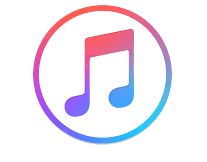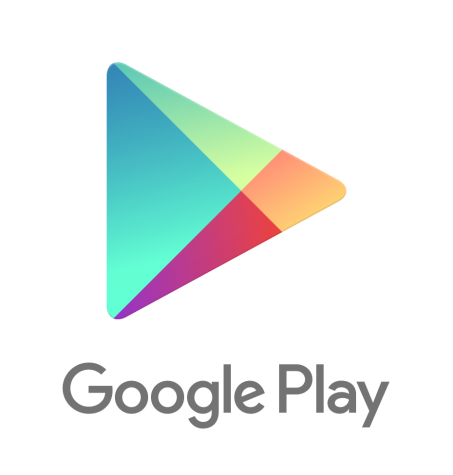Which Streaming Service is Right For You?
February 21, 2017
As the age of CDs is slowly getting overtaken by music streaming services like Spotify and Apple Music, it isn’t hard to believe that so many new music streaming services are coming to the surface. The main streaming services at the top of the game are: Apple Music, Spotify, Tidal, Pandora, and Google Play.
Which streaming service is the one for you? The service you pick will first depend on how much you want to pay for the music. Many of the high paying services give free trials, ranging from two weeks to three months. If you do not want to purchase a membership, two of the five available choices are knocked out since Tidal and Apple Music are the only ones that require a paid membership. Pandora, Spotify, and Google Play all have free accounts that you can make and use but the features are limited, but all three of these streaming services also have an option where you can pay to be a member and get all of the extra features. Each service offers different available features when you pay for a membership but it is hard to tell which of these streaming services would be the best to invest in for your own personal use.
Apple Music, with over 11 million users since launch, is $9.99 per month or the first three months free  with an iPhone. This gives the user access to 30 million songs to stream onto their technological devices, including the music on the iphone’s iCloud. Apple also offers a genius section, much like with their app store, where they show the user what they think they would want to hear based off listening history. Paying members can also stream offline music while their devices are not connected to the Internet with a sound quality given is 256 kilobits per second. One major pro with using Apple Music is the exclusive release of content, much like Frank Ocean’s newest album Blonde. The only con of using Apple Music is that often times some of the music on the iCloud will go missing and the user will have to take time to reload the songs back on. The app itself is hard to use as well, being totally different from the old Music app on the iPhones it is difficult to navigate and figure out where everything is located
with an iPhone. This gives the user access to 30 million songs to stream onto their technological devices, including the music on the iphone’s iCloud. Apple also offers a genius section, much like with their app store, where they show the user what they think they would want to hear based off listening history. Paying members can also stream offline music while their devices are not connected to the Internet with a sound quality given is 256 kilobits per second. One major pro with using Apple Music is the exclusive release of content, much like Frank Ocean’s newest album Blonde. The only con of using Apple Music is that often times some of the music on the iCloud will go missing and the user will have to take time to reload the songs back on. The app itself is hard to use as well, being totally different from the old Music app on the iPhones it is difficult to navigate and figure out where everything is located
With over 75 million users, Spotify offers their free version that do not allow for users to choose songs on demand and have ads every couple of songs. Users could also pay the $10 per month where ads are  bypassed and music can be listened to on demand. Their music library contains well over 30 million songs which can be heard at 160 kilobits per second on the “normal” setting or 320 kilobits per second with the “high quality” setting. Listening to music offline, however, is a feature that only Spotify Premium members get to enjoy, there is a small period of time where users on the free trial can download their music but it disappears with the free trial end. One major bonus that both the free version and paying version have is Facebook integration, where users can connect with their friends to see what the other is listening to. The Spotify app itself is very easy to use in terms of searching artists and songs as well as building playlists. The only problem with the app is that with the free version, the ads are often intrusive and overbearing. Spotify has dimmed this down with 30 ad-free minutes of listening after watching a short ad.
bypassed and music can be listened to on demand. Their music library contains well over 30 million songs which can be heard at 160 kilobits per second on the “normal” setting or 320 kilobits per second with the “high quality” setting. Listening to music offline, however, is a feature that only Spotify Premium members get to enjoy, there is a small period of time where users on the free trial can download their music but it disappears with the free trial end. One major bonus that both the free version and paying version have is Facebook integration, where users can connect with their friends to see what the other is listening to. The Spotify app itself is very easy to use in terms of searching artists and songs as well as building playlists. The only problem with the app is that with the free version, the ads are often intrusive and overbearing. Spotify has dimmed this down with 30 ad-free minutes of listening after watching a short ad.
Tidal, a music empire created by Jay-Z and partially bought by Sprint, offers a higher quality of sound when pay $9.99 for a premium account. Sound can range from 96 kilobits per second to 320 kilobits per
second. And the $19.99 subscription to Tidal HiFi will give listeners the best sound quality of all the  music streaming services at 1411 kilobits per second. There are 3 million users worldwide, and the app hit 1 million users in October 2015, just 8 months after it’s launch. For both Tidal Premium and Tidal HiFi listeners can get a 30 day free trial which can be cancelled at any time without a charge. The Tidal library adds up to more than 30 million songs and 75,000 videos as well as exclusives that are not available anywhere else. Such as: Kanye West’s new, unedited album, The Life of Pablo, which, up until the beginning of April, was only available on Tidal until he released the songs remixed on other streaming sites; playlists that have been curated by Beyonce, Jack White, Jay-Z, Jason Aldean, and deadmau5; Daft Punk’s self-directed film Electrona; the visual Beyonce album entitled Lemonade; and the first TV performance of The White Stripes. Tidal’s apps usually have issues with bugs and stability as well as being hard to use; however, the sound quality is high and the exclusives given could cancel out these problems.
music streaming services at 1411 kilobits per second. There are 3 million users worldwide, and the app hit 1 million users in October 2015, just 8 months after it’s launch. For both Tidal Premium and Tidal HiFi listeners can get a 30 day free trial which can be cancelled at any time without a charge. The Tidal library adds up to more than 30 million songs and 75,000 videos as well as exclusives that are not available anywhere else. Such as: Kanye West’s new, unedited album, The Life of Pablo, which, up until the beginning of April, was only available on Tidal until he released the songs remixed on other streaming sites; playlists that have been curated by Beyonce, Jack White, Jay-Z, Jason Aldean, and deadmau5; Daft Punk’s self-directed film Electrona; the visual Beyonce album entitled Lemonade; and the first TV performance of The White Stripes. Tidal’s apps usually have issues with bugs and stability as well as being hard to use; however, the sound quality is high and the exclusives given could cancel out these problems.
Pandora, which is normally free to everyone, offers Pandora One which is $4.99 a month and allows listeners more skips within an hour and gives ad free music. Free members of the service get just six  skips within an hour of listening while Pandora One members have an increased skip limit, not completely getting to bypass it. This skip limit helps Pandora avoid paying royalties on songs that are
skips within an hour of listening while Pandora One members have an increased skip limit, not completely getting to bypass it. This skip limit helps Pandora avoid paying royalties on songs that are
getting skipped multiple times. Besides these two differences, Pandora and Pandora One are very similar. Both are a free personalized radio where listeners enter a favorite song, artist, or genre and it will create a playlist based off this entered aspect. Pandora streams at a 192 kilobit per second quality for both Pandora and Pandora One. With more than a million songs in their library, Pandora’s users add up to 80 million worldwide.
Google Play is another service that offers a free membership and a $9.99 premium membership where  users can download the song files and get an “All Access” subscription to Google Play music, as well as Youtube Red with on-demand streaming and storage of music. A Family Plan is also available for $14.99
users can download the song files and get an “All Access” subscription to Google Play music, as well as Youtube Red with on-demand streaming and storage of music. A Family Plan is also available for $14.99
a month that includes the “All Access” membership where users can add up to six family members. With a basic, free account users can upload and listen to up to 50,000 songs in their personal libraries. The good thing about Google Play’s streaming quality is that it automatically adjusts the quality based on internet connection, if the connection is slower it will give the best quality that it can with that connection. The highest quality sound it puts out is 320 kilobits per second. Unlike Spotify, Google Play has no social media integration so users cannot connect and show their friends what they are listening to, if this is a must, Google Play may not be the best service to use.
One major problem with many music streaming services is the amount of money they give back to the artists per stream. This controversy first started with Taylor Swift and Apple Music; after Apple released a statement saying that artists would not be paid for the songs streamed by the three month free trial users, Taylor removed her music but soon added it back when Apple promised to pay no matter who is streaming the song. Music owners now receive 71.5% of Apple Music’s revenue in the US. Spotify promises their artists anywhere from $0.006-$0.084 per stream by listener but truly the artists are receiving closer to $0.001128 per stream after all other expenses, including paying the recording studio, agents, and label. Tidal claims to give their artists anywhere from $.024-$0.028 per stream on the Tidal website. Pandora is probably the lowest paying streaming service, paying artists $0.001 per stream. Google Play is where it gets tricky, they claim that 0.5% of the total streams equals 0.5% of the royalty revenue.
Whether you are looking for a service with high quality sound, a large music library, or a cheap plan that allows you to listen to music whenever you want there is at least one music service out there to choose from. All websites have their pros and cons, it just depends on the amount of money you would want to spend on music.


